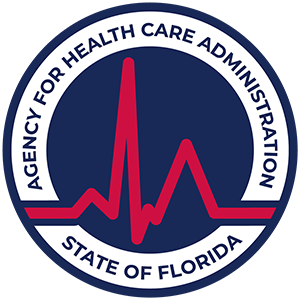Molly vs Ecstasy: Protecting Teens from MDMA Risks
Understand the differences between Molly and ecstasy, their risks, and how they impact teen safety. Learn signs of use and strategies for drug abuse prevention
Molly and ecstasy are two terms used to describe MDMA, a class of popular party drugs among youth and young adults. They are often used interchangeably but differ in their form, appearance, and purity level.
High school seniors report lifetime ecstasy use around 8% when “Molly” was included in the survey question, compared to 5.5% when it was not included. This difference highlights the need for more education around accurate terminology to help youth understand that “Molly” is a form of ecstasy or MDMA [1].
MDMA abuse in teens can stunt brain development and increase the risk of serious mental health challenges such as anxiety and depression. Read on to educate your teen on what MDMA, ecstasy, and Molly are so they can understand the risks and make safer choices.
What is MDMA?
MDMA is a synthetic drug often taken at parties, concerts, and music festivals. It also goes by the names of ecstasy and Molly, depending on its presentation. It has some of the highest rates of use among older teens and young adults, with many using it for its sudden increase in feelings of euphoria, pleasure, and empathy. It shares properties of both stimulants (cocaine or meth) and psychedelics (LSD or magic mushrooms).
The stimulant effects of Molly increase energy, alertness, and euphoria, while psychedelic properties increase feelings of openness, expanded consciousness, and emotional warmth. Around 1.3% of teens aged 12 to 17 reported using ecstasy in the past year. However, these numbers are thought to be underreported, as many teens do not know that ecstasy and Molly are both used to refer to MDMA [1].
Ecstasy, Molly, and MDMA: The Difference Between Presentations
Ecstasy, Molly, and MDMA all refer to the chemical 3,4-methylenedioxymethamphetamine (MDMA). However, they often differ in their presentations, form, purity, and how they are used [2].
Ecstasy: MDMA in pill form, and most common among youth, often sold as colorful tablets that resemble plants, animals, or musical instruments. Carries a higher risk than other forms of MDMA as tablets are often combined with caffeine or meth, and many report a harsher come-up or comedown compared to pure MDMA.
Molly: Slang for “pure MDMA”, often comes in a white or off-white powder form or capsule. It is thought to be purer than ecstasy, although it can still be cut with harmful drugs such as methamphetamine, cocaine, or even fentanyl.
MDMA: Pure, synthetic compound sold in a white or off-white powder or crystal form. Often dissolved in liquid, snorted, or swallowed. Tends to be safer, but often less accessible to youth.
Is MDMA Addictive?
MDMA has a lower risk potential for abuse than other stimulants such as cocaine or meth; however, regular or heavy use of MDMA can increase tolerance and lead to dependence.
Regular Molly users often experience cravings, withdrawal symptoms, and continue to use despite negative effects on health or cognitive functioning. Regular MDMA use can increase the risk of serious health problems such as heart attack and stroke, even in youth.
MDMA affects several areas of the brain, including [3]:
- Neurotransmitters: Serotonin, dopamine, and oxytocin flood the brain to quickly increase feelings of euphoria, pleasure, and arousal. After the effects of MDMA wear off, this leads to a crash with symptoms such as depression, anxiety, and fatigue.
- Reward System: Regions such as the basal ganglia, which control reward, pleasure, and habit formation, are activated by dopamine. This reinforces drug-taking behavior and impacts cognitive functions in youth, such as motivation and concentration.
According to the National Institute on Drug Abuse, around 2.2 million teens 12 years and older report ecstasy use in the past year. Fatal overdoses from MDMA are rare but possible, mainly caused by dehydration or when mixed with other substances. In 2019, 23% of all drug overdoses involved a psychostimulant such as ecstasy (often combined with an opioid) [4].
The Effects of Ecstasy
Short-term use can affect body temperature and increase the risk of dehydration. And long-term, regular use can lead to addiction, causing academic decline, strained relationships, and changes in personality such as aggression or irritability.
Short-Term Effects of Ecstasy
There are several short-term effects of ecstasy/MDMA that can help you recognize if your teen is rolling (“on molly”). These include:
- Dilated, enlarged pupils
- Jaw clenching, teeth grinding
- Increased euphoria, energy, affection, or sexual desire
- Nausea, headache, shakiness
- Altered perception of time, increased sensory perception
Long-Term Effects of Ecstasy
The long-term effects of MDMA can affect both the physical and mental health of teens. MDMA can also disrupt brain development, causing problems with mood regulation, sleep, and pain perception.
Effects on Physical Health
- Changes in Brain Chemistry: MDMA contributes to long-term reductions in serotonin transporter density, known as serotonin depletion.
- Temperate Regulation: MDMA can impair the body’s ability to regulate internal temperature, increasing the risk of hyperthermia and dehydration, especially when in party settings or crowds.
- Cardiovascular: MDMA increases heart rate and blood pressure, which can contribute to long-term heart problems.
- Sleep Cycle: Regular use can lead to insomnia and decreased quality of sleep, complicating recovery and affecting healthy brain development.
MDMA Effects on The Brain
- Impaired Memory: Studies found that teens who use MDMA long-term have reduced functioning in verbal, visual, and working memory [5].
- Cognitive Skills: Regular MDMA use can shorten attention span and contribute to academic decline.
- Mood Disorders: MDMA increases the risk of serotonin depletion, and many regular users struggle with anxiety, depression, and intense mood swings when stopping the drug [2].
- Risk of Stroke: Long-term MDMA use is linked to an increased risk of strokes in adulthood.
What To Do If You Suspect Your Teen Is Using MDMA
If you suspect your teen is using MDMA, it’s important to approach it with open communication, education, and from a perspective of harm reduction. Many teens use MDMA once they get to college, and providing them with strategies to increase safety and cope with their mental health can reduce the risks of MDMA abuse or psychological dependency.
Open Communication
Speak with your teen in an open and non-judgmental way. Ask them open-ended questions about their MDMA use: Do they take it to go to parties? To get high with friends? To cope with feelings of sadness? Encourage them to speak openly about their experience and actively listen.
Educate them about the risks of Molly and discuss your own experiences with drug use to build trust if you feel comfortable. Discuss boundaries, rules, and consequences regarding substance abuse with your teen so they know their limits.
Harm Reduction
Although full abstinence from drugs and alcohol is ideal, promoting harm reduction strategies can greatly increase safety for teens who experiment with drugs or find themselves in situations where drugs are present. Parents should discuss the importance of harm reduction with teens (especially those who are of age to go to college soon). Topics related to MDMA harm reduction may include:
- MDMA testing kits can test for harmful substances such as fentanyl or synthetic cathinones.
- Staying hydrated and avoiding alcohol while on MDMA, as many fatalities are related to dehydration and overheating.
- Taking periods to rest and recover between MDMA trips (treat it like a 2-day experience). One day for full rest and recovery.
Lifestyle Changes
Encourage your teen to stay active and involved. Teens who are bored, isolated, or lack purpose or a sense of belonging are at an increased risk of substance abuse. If your teen is abusing MDMA or psychostimulants, they could be searching for an expressive or emotional outlet.
Encourage them to join an extracurricular activity such as art, dance, or music. Limit their exposure to clubs, music festivals, or college campuses (many teens who use MDMA get it from university parties).
Early Intervention and Treatment
If you suspect or confirm MDMA use in your teen, the earlier the intervention, the better. There are several professional teen hallucinogen addiction treatments, including:
- Cognitive Behavioral Therapy (CBT) helps reframe negative thinking patterns that drive substance abuse and develop positive skills for long-term coping.
- Expressive Therapies such as dance, music, or art therapy can support emotional processing and reduce cravings for drugs and alcohol.
- Medication may be prescribed for depression, anxiety, or mood disorders related to MDMA use.
- Family therapy can address dynamics in the home that drive substance abuse or other forms of escapism, focusing on skills like communication, empathy, and respect.
Teen Substance Abuse Treatment for MDMA Abuse at Lotus Behavioral Health in FL
Lotus Behavioral Health is a residential treatment facility for teens located in Florida. Our programs are designed to support teens and their families with the tools they need to recover from substance abuse and co-occurring mental health disorders.
We offer a blend of comprehensive recovery services such as individual therapy, group therapy, medication management, and skill-building workshops to help prevent drug abuse, as well as for teens recover from stimulant addiction. Contact our admissions team today to find support for your family.

Sources
[1] Palamar, J. et al. (2023). Prevalence and Correlates of Past Year Ecstasy/MDMA Use in the United States. Journal of Addiction Medicine, 17(5), 592–597.
[2] National Institute on Drug Abuse. MDMA (Ecstasy/Molly). 2024.
[3] Ahmad, R. (2020). MDMA and the Brain: A Short Review on the Role of Neurotransmitters in Neurotoxicity. Basic and clinical neuroscience, 11(4), 381–388.
[4] National Institute on Drug Abuse. 2024. Drug Overdose Deaths: Facts and Figures.
[5] Laws, K. et al. 2007. Ecstasy (MDMA) and memory function: A meta-analytic update. Pub Med.














.svg)








